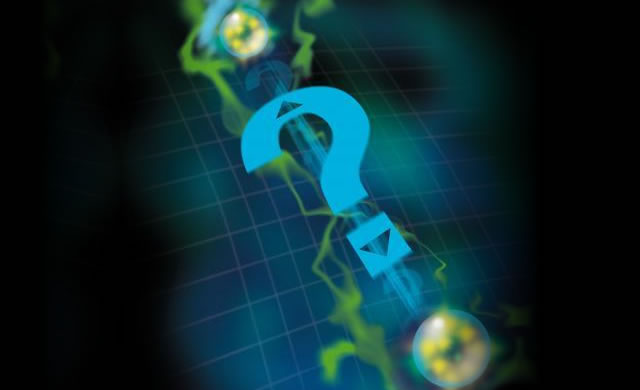
Un esperimento di entanglement quantistico per lo studio dello spaziotempo
Alcuni fisici hanno proposto un esperimento per verificare quali sono le previsioni della meccanica quantistica quando si tenta di descrivere le proprietà dello spaziotempo. La proposta arriva da un gruppo internazionale di ricercatori provenienti dalla Svizzera, dal Belgio, dalla Spagna e da Singapore e si basa sulla disuguaglianza denominata “hidden influence inequality”. “Siamo interessati a capire se possiamo spiegare alcuni fenomeni fisici senza sacrificare il nostro senso comune delle cose che avvengono in uno spaziotempo continuo e regolare a cui siamo abituati” spiega Jean-Daniel Bancal del Centre for Quantum Technologies. Il fatto interessante è che sembra esistere una prospettiva reale per realizzare un tale esperimento. Sin da quando venne introdotta agli inizi degli anni ’20, la teoria dei quanti prevede un comportamento bizzarro delle particelle elementari, come ad esempio l’entanglement quantistico di due particelle che si comportano come se fossero una sola anche quando si trovano a grandi distanze. Questo fenomeno sembra violare il nostro senso comune di causa ed effetto, un comportamento che i fisici chiamano ‘non locale’. Inizialmente fu Einstein che mise l’attenzione sulle preoccupanti implicazioni di quanto previsto dalla meccanica quantistica e che egli stesso definì come “una azione a distanza che fa accapponare la pelle”
La domanda è: cosa succede se viene confermata la natura quantistica del nostro mondo? Cosa vuol dire? Abbiamo due scelte: la prima sembra sfidare la relatività e rendere visibili le variabili nascoste, il che implica accettare una comunicazione in cui i segnali luminosi si propagano con velocità superiori a quella della luce; la seconda vuole che le variabili nascoste siano infinitamente veloci oppure che debba esistere qualche processo che ha un effetto equivalente quando viene osservato nel nostro spaziotempo. Il test attuale non è in grado di fare la distinzione.
Comunque sia, in entrambi i casi ciò implicherebbe che l’Universo sia fondamentalmente non locale nel senso che ogni bit di Universo può essere connesso istantaneamente ad ogni altro bit situato in un’altra parte dello spazio.
Fonte/Leggi tutto → astronomicamens.wordpress.com
Looking beyond space and time to cope with quantum theory
The possibility that strange quantum behaviour can be explained by ‘hidden influences’ is testable in a new way, thanks to work by researchers at the Centre for Quantum Technologies and their collaborators in Switzerland, Beligum and Spain. The proposed experiment could force us to make a choice between extremes to describe the behaviour of the Universe. In a paper published online 28 October in Nature Physics, the team present the ‘hidden influence inequality’ that enables their proposal. The inequality exposes how quantum predictions challenge our best understanding about the nature of space and time, Einstein’s theory of relativity. Nature Physics notes the work with a Perspective by an independent expert, which also puts the result in broader context. “We are interested in whether we can explain the funky phenomena we observe without sacrificing our sense of things happening smoothly in space and time,” says CQT Research Fellow Jean-Daniel Bancal, first author on the paper. He carried out the research as a PhD student at the University of Geneva in Switzerland before joining in October the CQT group of Valerio Scarani, also an author on the paper. Valerio is a CQT Principal Investigator and Professor at the National University of Singapore. It was Einstein who first drew attention to the worrying implications of what he termed the “spooky action at a distance” predicted by quantum mechanics. Quantum theory predicts bizarre behaviour for particles — such as two ‘entangled’ particles behaving as one even when far apart — that seems to violate our sense of cause and effect in space and time. Physicists call such behaviour ‘nonlocal’. Common sense tells us that any such coordinated behaviour must result from one of two arrangements. First, it could be arranged in advance. The second option is that it could be synchronised by some signal sent between the particles.
So if the result is greater than 7 – in other words, if the quantum nature of the world is confirmed – what will it mean? Here, there are two choices. On the one hand, there is the option to defy relativity and ‘unhide’ the influences, which means accepting faster-than-light communication. Relativity is a successful theory that researchers would not call into question lightly, so for many physicists this is seen as the most extreme possibility. The remaining option is to accept that influences must be infinitely fast – or that there exists some process that has an equivalent effect when viewed in our spacetime. The current test couldn’t distinguish.
Either way, it would mean that the Universe is fundamentally nonlocal, in the sense that every bit of the Universe can be connected to any other bit anywhere, instantly.
Source/Continue reading → www.quantumlah.org






















I think this is one of the most important information for me.
And i am glad reading your article. But wanna remark on few
general things, The site style is wonderful, the articles is really great : D.
Good job, cheers
Sono completamente affascinato.
Alberto